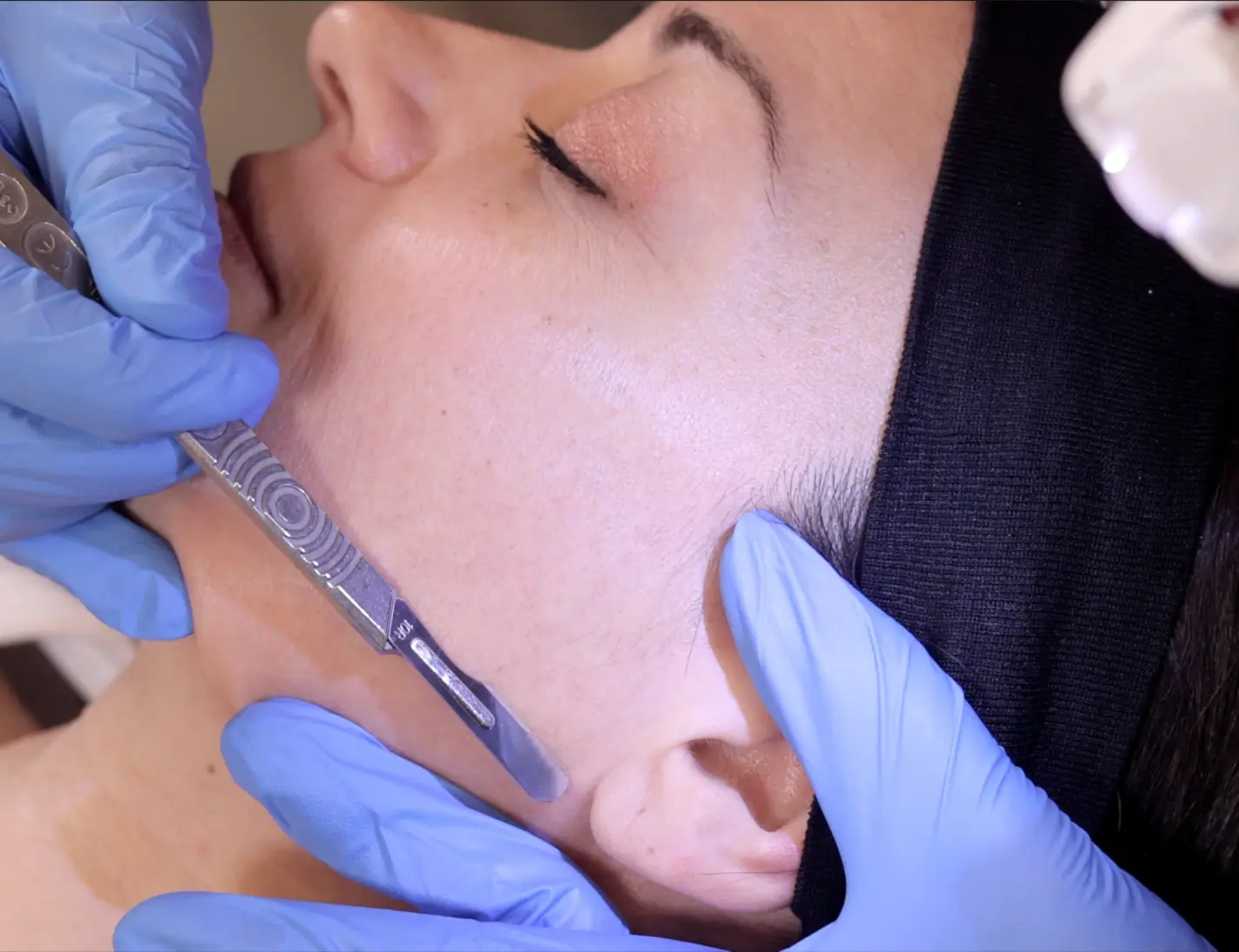
Dermaplaning is one of the most popular exfoliating treatments today, known for delivering smooth, bright, instantly refreshed skin. But with its popularity comes a lot of confusion and misinformation. Many clients hear mixed messages online or from friends, making it difficult to understand what the treatment actually does.
This guide breaks down the most common dermaplaning myths so you can feel confident, informed, and fully prepared before your treatment.
Myth 1: Dermaplaning Makes Your Hair Grow Back Thicker or Darker
This is the number one misconception. Dermaplaning removes vellus hair, also known as peach fuzz. This hair is naturally soft and fine, and removing it does not change its structure. Hair grows from the follicle, not the surface of the skin, so dermaplaning cannot alter its thickness, color, or speed of growth. Your peach fuzz will return exactly as it was before.
Myth 2: Dermaplaning Is Too Harsh for Sensitive Skin
Dermaplaning is actually one of the gentlest exfoliation methods. It does not use chemicals, acids, or heat, making it safe for sensitive skin when performed correctly by a trained professional. Many clients with easily irritated skin choose dermaplaning because it smooths and brightens without causing redness or discomfort.
Myth 3: Dermaplaning Causes Breakouts
Dermaplaning does not cause acne. In many cases, it can help reduce congestion by removing dead skin and buildup. However, dermaplaning should not be done over active acne or inflamed breakouts, as the blade can irritate the area. When performed on healthy skin and followed with proper aftercare, dermaplaning is safe and does not trigger breakouts.
Myth 4: Dermaplaning Makes Pores Look Larger
Pores do not change in size from dermaplaning. In fact, removing surface debris and dead skin can make pores appear smaller and the overall skin texture look more refined. Many clients notice smoother, more even-looking skin immediately after the treatment.
Myth 5: Dermaplaning Is Only for People with a Lot of Peach Fuzz
While removing peach fuzz is a benefit, it is not the only reason to choose dermaplaning. Anyone dealing with dullness, uneven texture, or dry patches can benefit. The exfoliation reveals a brighter complexion, helps skincare products absorb better, and creates a smooth surface that makes makeup glide on flawlessly.
Myth 6: Dermaplaning Is Not Good for Dry Skin
Dermaplaning is great for dry or flaky skin because it removes the buildup that can prevent moisture from penetrating. After the treatment, hydrating products work more effectively, leaving the skin softer, smoother, and better balanced.
Myth 7: Dermaplaning Is the Same as Shaving Your Face
Although both use a blade, dermaplaning and shaving are not the same. Dermaplaning uses a sterile, medical-grade scalpel and a precise technique to remove both dead skin and fine hair. The results are more refined and longer lasting than traditional shaving, which only removes hair.
The Bottom Line: Dermaplaning Is Safe, Gentle, and Effective
When done by a trained professional, dermaplaning is a safe and highly effective treatment that instantly improves texture, radiance, and product absorption. Understanding what is fact vs myth helps you make informed decisions and ensures you get the best results from your treatment.